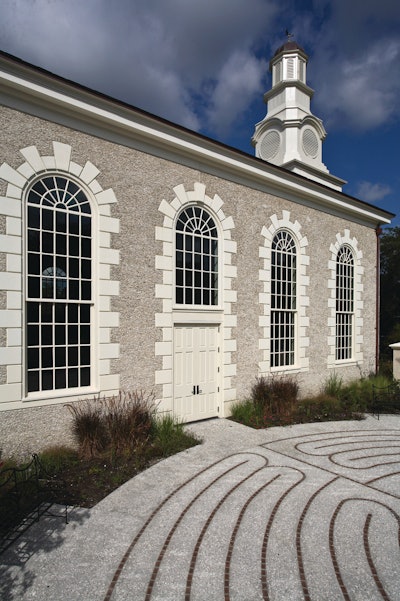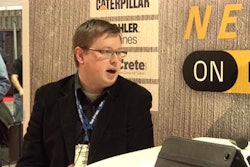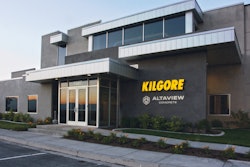
They don’t build ‘em like they used to. You’ve heard the phrase, right? In some ways the cliché can be dismissed as “old-folk” talk. Why would we build the way we used to? Not much is the way it used to be. What’s so great about the way we used to build, and what’s wrong with the way we’re building now?
Construction is different these days, as opposed to 40 years ago. There are different pressures, processes, tools and methods. Constructing buildings is not getting easier; the process as a whole continues to complicate itself: demanding schedules, incredibly tight budgets, increasing owner expectations, tighter regulations, more oversight, more complications, etc. To deal with all of that, fewer workers are asked to do more work in less time. Quality is being set aside to allow for greater quantity, and for a good majority of the construction industry, the fun has been taken out of it.
Opportunities for great success are getting slimmer. Jobs are being given to the lowest bidder without regard to quality. Because of this, quality is being fought over after-the-fact in specifications and contracts instead of conscience and heart. It is no surprise to see that pride in the construction industry is trending downward.
The connection between pride and craft or quality is an interesting one. Which is it: one who is proud will do better work, or one who does better work is more proud? You love your job because you’re good at it, or you’re good at your job because you love it.
The general assumption is that a laborer brings to the job a certain level of pride and that pride is directly reflected in the quality of work performed by said individual. This is sort of a pessimistic way of looking at it when you really think about it. If this is true, then the supervisor, manager or whoever is in charge is off the hook, right? If the person who hired the guy didn’t check first to see whether or not he had pride, how could they be charged with ensuring the quality of his work? They have no control over this personality trait, this inherent quality, this God-given will to do well. There is no hope.
While this is in part just a matter of semantics, it is an important issue to discuss. Recognizing the importance of craftsmanship and its relationship to pride will aid tremendously in improving both quality control and worker moral.
What tilt-up offers
With tilt-up concrete construction, contractors are discovering inherent opportunities for a renewed focus on craftsmanship. Because of this, the satisfaction of their clients and the pride among its crews are skyrocketing.
One would not normally think of a four-story office building as being handcrafted. Often they are not; they are assembled. While some are made on site, a large majority of components come to the site and they are assembled according to the plans, specifications and manufacturer’s instructions. Open up a current architectural magazine and you will discover pages and pages of products to be attached to a building. The typical office building these days is an assemblage of these bells and whistles.
One exception to this trend is a tilt-up concrete building. A form of precast concrete construction, site-cast tilt-up panels can be related both to plant-cast precast, in the sense that it is cast in a location other than its final location, and to cast-in-place concrete construction as it is formed and poured on-site.
To appreciate the inherent opportunities for craftsmanship afforded by tilt-up concrete construction, one needs to look no further than the well recognized benefits of choosing the building system in the first place.
Time is quality. You’ve saved it, now put it to good use. While time most definitely is money, it is also directly related to quality, and because one of the greatest benefits of tilt-up concrete construction is speed, there is more time to focus on it.
With many other forms of construction, contractors are juggling the ordering, arrival, storage, installation and finishing of a multitude of products. Each one of these steps or items creates opportunities for lost time and mistakes. With tilt-up, there are minimal products to coordinate, virtually no on-site storage needs, and, because of the time dedicated to meticulous planning, very little opportunity for mistakes.
With this speed comes a need for planning. Constructing a tilt-up building takes an extraordinary amount of planning to achieve precise execution. Because of the size of the panels and the typical sequencing of the job, every effort must be made to ensure the panels are appropriately laid out and located for efficient movement during the erection stage.
Before placing even one foot of formwork, hours of thought go into panel layout diagrams. These diagrams are designed to inform the exact location of each panel construction. They ensure the forming and casting processes are happening in harmony with other efforts being conducted on site. Panel layout diagrams are also critical in maximizing the efficiency of the crane and the uninterrupted placement of panels in a manner that is safe and physically possible.
The attention to detail and demand for precision does not stop after the planning stages. These up-front efforts create an on site environment of accountability, knowledge, confidence and focus.
With panels measuring upwards of 100 feet tall, the demand for a consistently spaced vertical joint is no small task. Typically the joint between panels is a consistent ¾ inch. However, there are contractors (or architects) that insist on maintaining a standard ½-inch joint between panels. They insist that it looks nicer, provides the owner with an even tighter building and reduces the amount of sealant needed on the job. Understanding the difficulty in achieving these extremely tight tolerances over such a long distance, one can appreciate the extra time put in during the forming phase to ensure dimensional accuracy.
The fluidity of concrete. Concrete as a building material with measurable and adjustable flowability can be cast into virtually any shape creating an infinite number of project solutions. Therefore, tilt-up is uniquely positioned to utilize the distinct advantages of concrete. Additionally, it provides opportunities for cast-in elements and relief.
Working horizontally has its advantages. Because tilt-up panels are formed and cast horizontally, there are endless opportunities for unique forms and innovative textures. The distinctive project solutions offered through tilt-up craftsmanship are evidenced throughout the Tilt-Up Concrete Association’s (TCA) Tilt-Up Achievement Awards Program.
The ability to easily deliver form creativity is one of many attributes of tilt-up construction contributing to the resurgence of craft. The form of a tilt-up panel can be manipulated in plan, elevation or both. Curved, angled and shaped panels are regularly used and offer designers flexibility not economically practical on most projects.
The panel’s shape is not the only aspect that can easily be manipulated. With only the edge to form, both the casting surface and the exposed face of the panel remain very accessible and can be easily affected to produce extremely unique finishes. From exposed aggregate to polished to tabby stucco and natural earthen finishes, there are absolutely no limitations beyond the contractor’s and designer’s imaginations … or project budget, of course.
The best part of all of this is that virtually anything is developable. That is to say not only is it possible to achieve these forms and finishes, it is practical. From the beginning, even on very complex projects, the contractor is set up for success. The confidence gained from knowing this challenges designers and contractors to continue to exceed expectations and, therefore, develop the foundation for pride.
It is clear that there are things happening within the industry that are unlike any other. The rate at which the quality of the design and construction of tilt-up buildings is improving is astonishing. Each year, there are projects that break new ground with a unique finish, an unbelievable form, incredible size, incredible speed and new applications. Craftsmanship and pride in the industry continues to soar as tilt-up concrete construction becomes the answer for more projects.



















